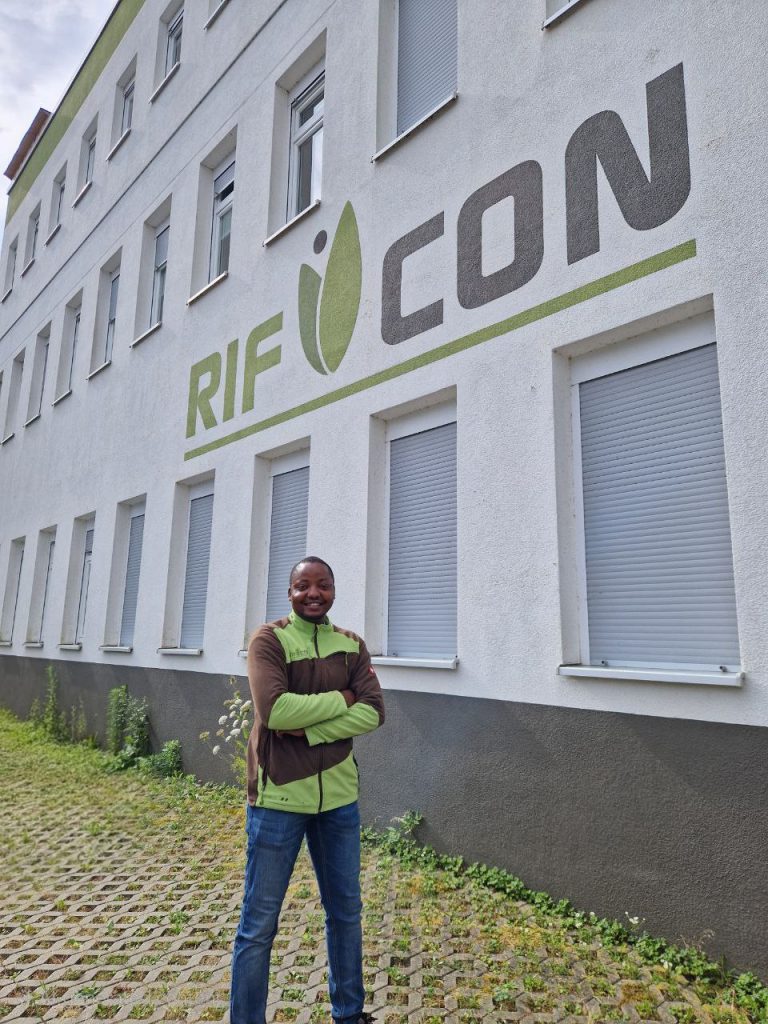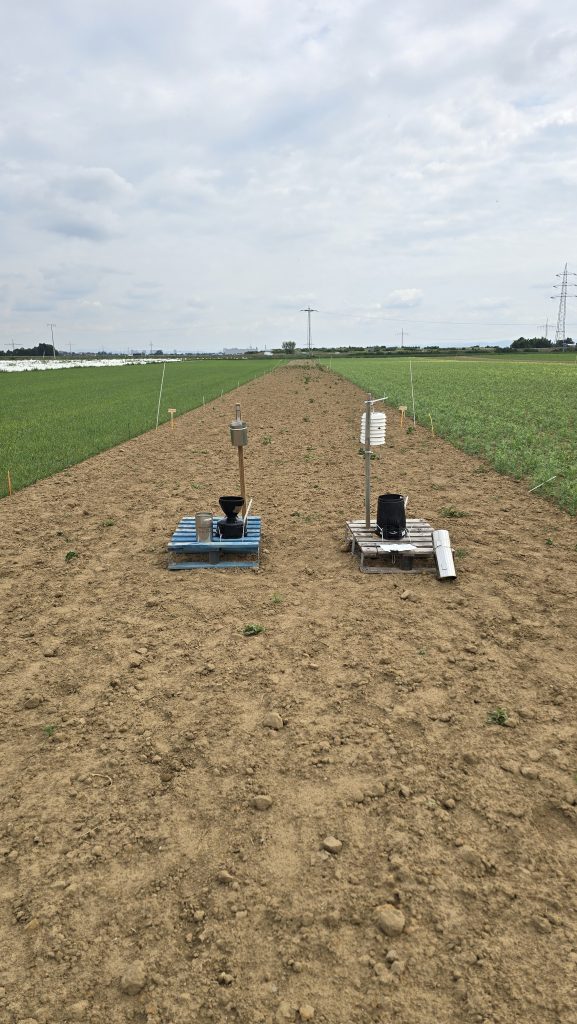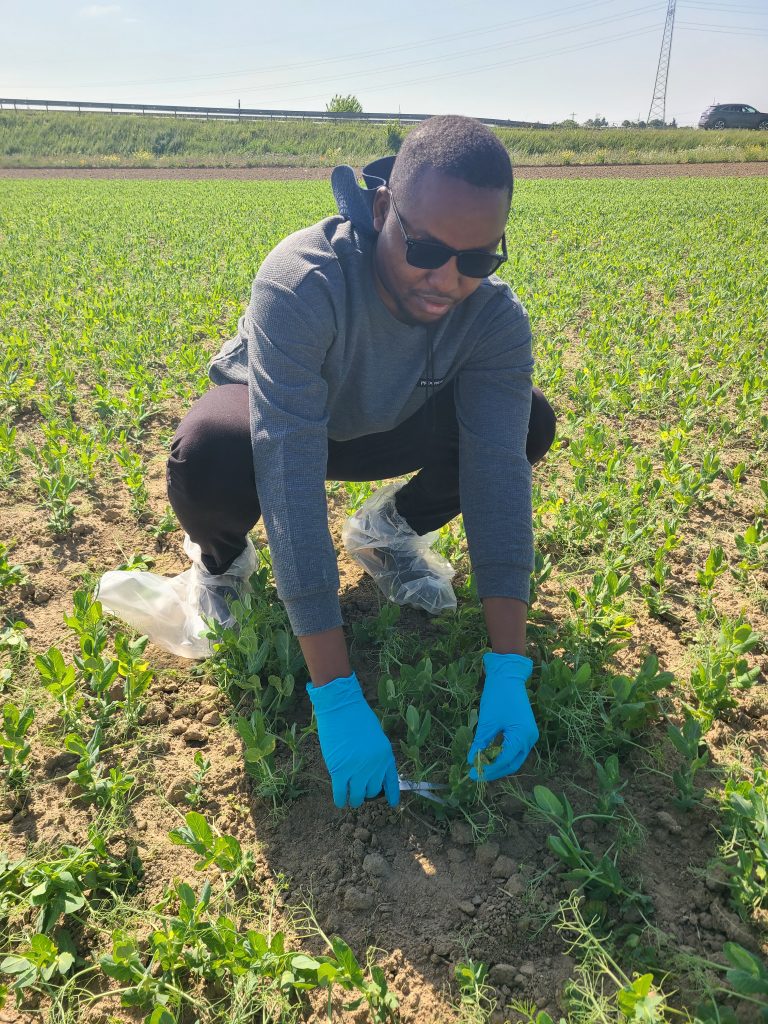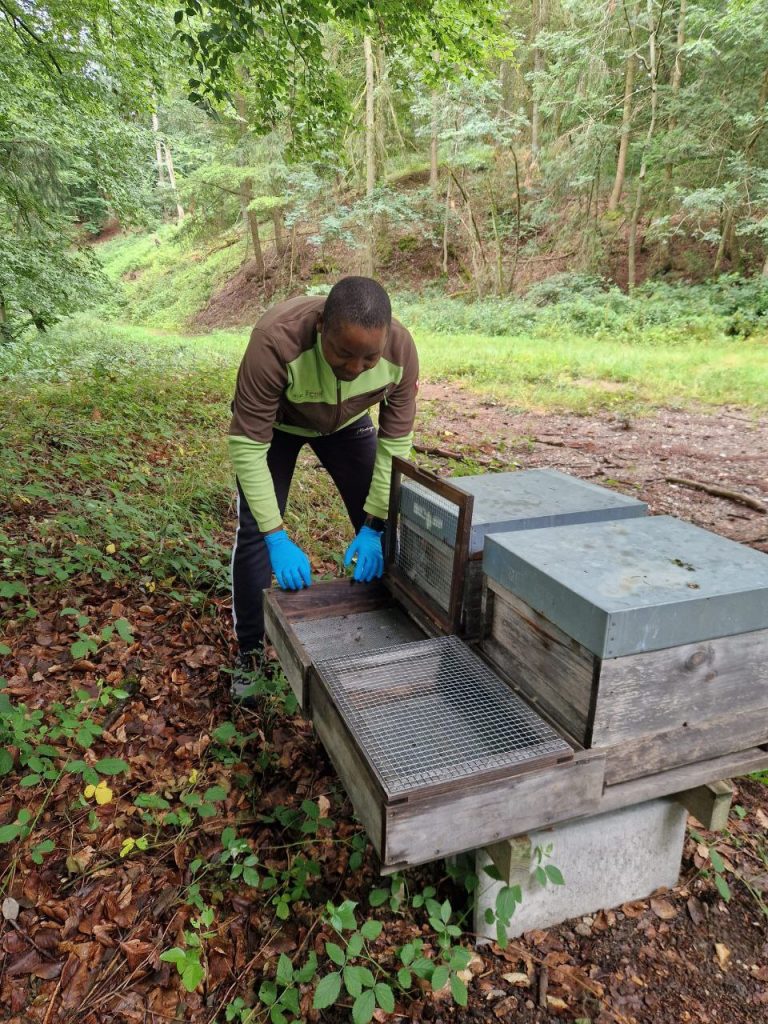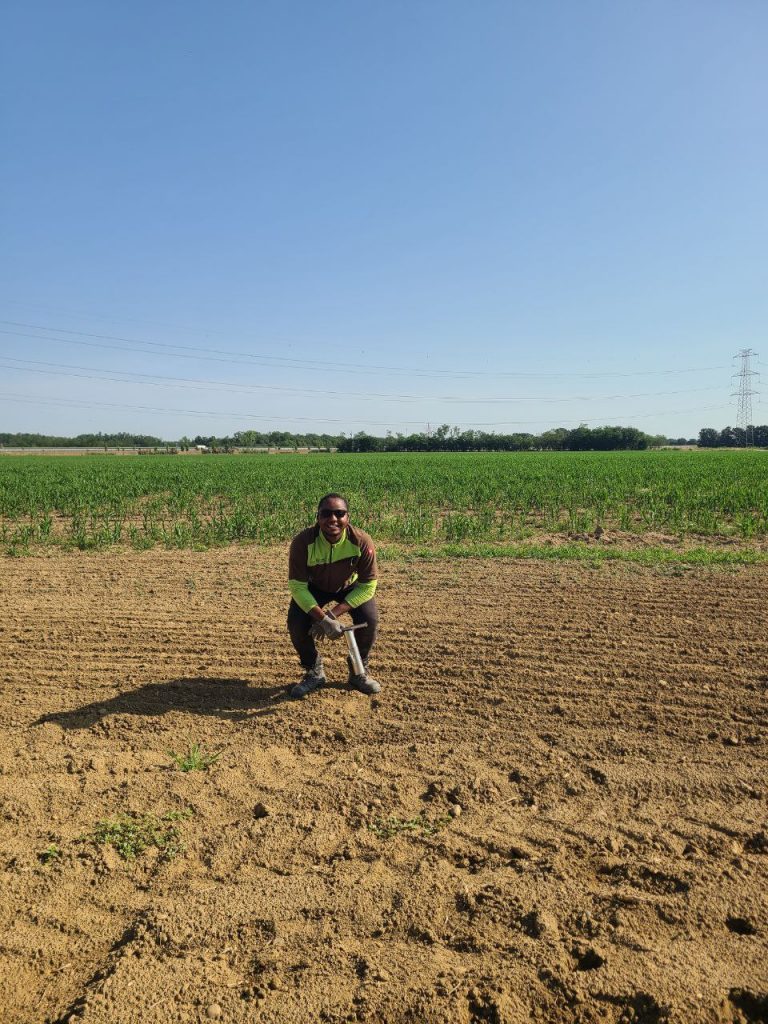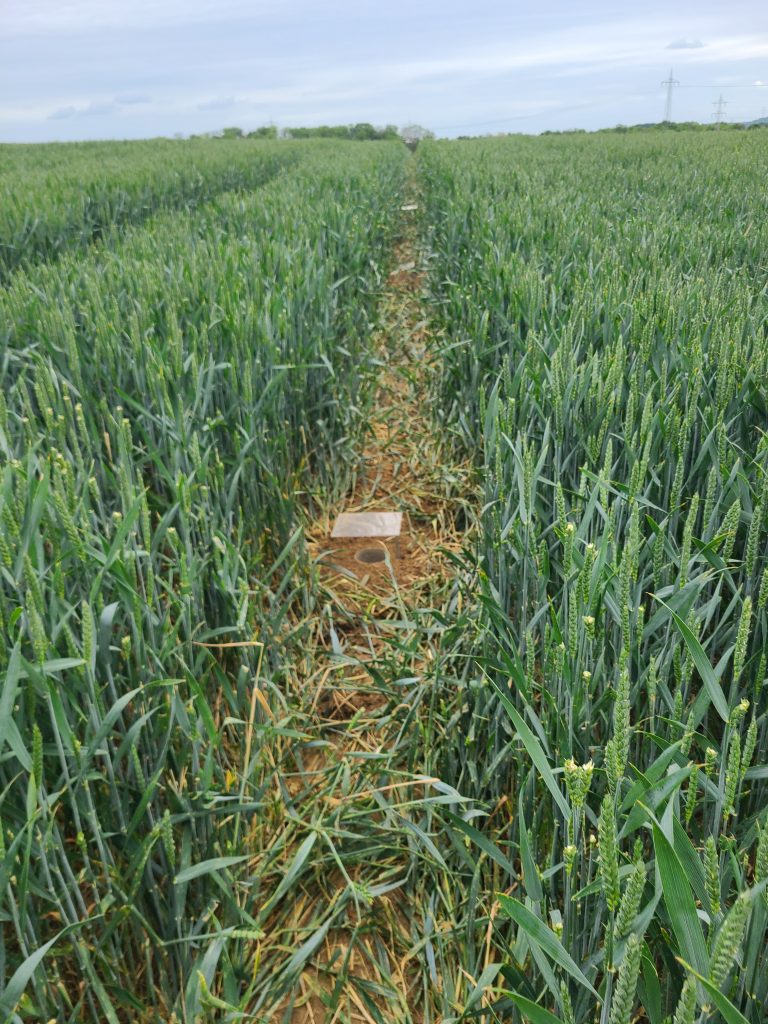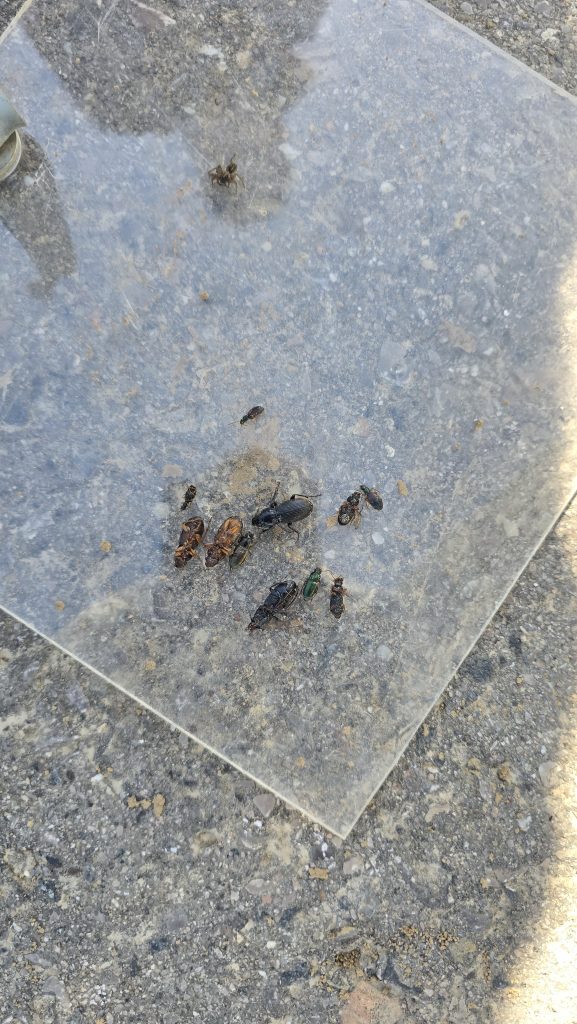Every Summer Semester, Ecotox Master students do a 2-month internship or AMEO (Applied Module at an External Organization). Today, Adetola Adebowale tells us about his AMEO experience in the Invertebrate and Residue Field Studies department at RIFCON GmbH in Hirschberg.
Hello everyone,
My name is Adetola Adebowale, and I recently completed a 9-week internship with the Invertebrate and Residue Field Studies team at RIFCON GmbH in Hirschberg from May to July 2025. During this period, I gained practical experience working with a scientific consulting firm that conducts GLP studies on the effects of plant protection products (pesticides) on food crops and non-target terrestrial organisms such as bees and earthworms for registration purposes.
I began the internship with a series of introductory lectures that covered topics such as consumer safety, effects modelling, pesticide registration, environmental conservation, and both terrestrial and aquatic risk assessment. These lectures provided the regulatory and scientific context that informed all subsequent fieldwork. In the first few weeks, I was actively involved in GLP plant residue studies on monocot (wheat) and dicot (oats) crops, and my duties (together with the team) were study set-up, chemical preparation and calibrated application, plant sample collection, storage, environmental data documentation and secure transportation of samples to the analytical laboratory, all under GLP. I also learned the plant BBCH growth scale, which is important in plant residue studies.
A major part of my experience was working on honeybee GLP studies, where I participated in acute toxicity tests on honeybee larvae and in field studies of bee colonies. I gained hands-on experience in brood assessment, colony development, behavioural, mortality, and foraging assessments, as well as comb photographic assessment using the Hiveanalyzer software, and a whole lot of documentation to evaluate brood termination rates. GLP studies on terrestrial invertebrates at RIFCON were equally interesting. I had the opportunity to work with the team assessing the effect of pesticides on earthworms (and collembola) from agricultural fields, not only in Germany but also in Hungary.
I was involved in other side activities during my internship. These include drafting GLP study plans, conducting small mammal assessments (shrews and mice), and arthropod sampling by setting pitfall traps in agricultural fields
I also worked with the Effects Modelling department to apply the TKTD Model of Lemna population (MoLePo) software to model the pulsed‑exposure effects of pesticides on Lemna gibba growth over time, where I was able to estimate key parameters such as the EC₅₀, slope, partition coefficient, permeability, and safety factor, as part of a tier 2 aquatic ecosystem risk assessment.
Overall, the internship provided me with intensive, hands-on experience in terrestrial ecotoxicological assessment, which I had always wanted to experience, and I am grateful to the field team for their support and willingness to share knowledge with an aspiring ecotoxicologist. Being outdoors can be very fun.

